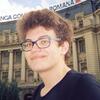The Successors to the First Generation of Stars

Following the formation of baryonic matter just after the Big Bang, the universe entered a period known as the dark ages, where this matter drifted aimlessly through an otherwise empty cosmos. That is, except for the minute gravitational forces that acted on slight matter inhomogeneities, causing gas to clump into clouds and collapse into the first stars, (confusingly) known as Population III (pop. III) stars. These stars, crucial to cosmological models, primarily remain undetected due to their extreme distances, and narrow presence on cosmological timescales.
With a lack of metals, pop. III stars were much larger and shorter-lived than stars today, existing between redshifts z = 10 - 30, or about 100 - 400 million years after the Big Bang. While the death of these stars coincides rather nicely with the observational limits of the James Webb Space Telescope (JWST), other factors, such as brightness, have made observation of these stars in practice challenging.
Now, a study led by Alex Cameron claims to have some exciting insights into the history and involvement of pop. III stars, focusing on the high-redshift galaxy GS-NDG-9422. This galaxy, located at a redshift of z = 5.943, some 4.3 Gyr after the big bang, caught Cameron’s attention due to some unusual spectral features. The study’s data were collected through the JWST’s NIRSpec instrument as part of the JADES survey. These were combined with further photometric data, which was matched to the observed spectra, ensuring consistency and accurate flux calibration across different wavelengths.


The researchers focused heavily on the spectra’s emission features, including hydrogen (H I), helium (He II) and various oxygen forbidden lines. These were identified with Gaussian fitting techniques to measure the absolute and relative strengths of lines.
To interpret these observations, the study employed photoionization models using the software CLOUDY, with the aim identify the nebular conditions and stellar populations that would exhibit the same galactic spectrum. Their models tested various ionisation sources, as well as possible sources of absorption along the lines of sight.
A key part of their analysis was evaluating the possible contribution of nebular continuum emission, including free–bound, free–free, and two-photon processes, with the latter playing a significant role. The two-photon process in hydrogen is a unique emission mechanism that, despite arising from a quantized electron transition, results in a continuum of photons. This occurs because the direct transition from the 2s to 1s state is forbidden by single-photon selection rules, necessitating the simultaneous emission of two photons to conserve energy. The energy of these photons can vary, although the total energy remains the discrete transition energy between the two levels, creating a broad continuum.
Within the spectrum of GS-NDG-9422, this manifested as the UV turnover, a continuum feature characterized by a gradual rise and fall-off, centred around 2431 Å. This feature only becomes visible under specific nebular conditions, such as high ionizing photon flux and moderate gas density, which allowed the team to use its presence to better characterise the temperature and density of the gas.
These methods allowed them to assess which model scenarios best matched the observed spectral features of GS-NDG-9422. Their results suggested that the galaxy’s spectrum was dominated by nebular emission, with the ionizing sources potentially being hot, young stars or a recently extinguished starburst event. However, these stars would have to be quite a bit hotter than those typically observed in our local universe; upwards of double the high end of local stellar temperatures.
The researchers note that the phenomenon of extremely hot stars and interstellar nebular material outshining a galaxy’s stars is characteristic of conditions expected in pop. III stars. Unfortunately, due to the chemical complexity exhibited by emissions within the spectra, GS-NDG-9422 cannot be the host of actual pop. III stars. Instead, it could offer a glimpse into the transition from the first generation of stars to the second that formed with heavier elements. Co-author Harley Katz emphasises their ongoing search for more galaxies with similar properties to determine if GS-NDG-9422 represents a typical phase of its era or a more unusual case.
--
Journal Source: A. Cameron et al, Nebular dominated galaxies: insights into the stellar initial mass function at high redshift, Monthly Notices of the Royal Astronomical Society, Vol. 534, No. 1, (2024), DOI: https://doi.org/10.1093/mnras/stae1547
Cover Image Credit: JWST/NIRSpec
